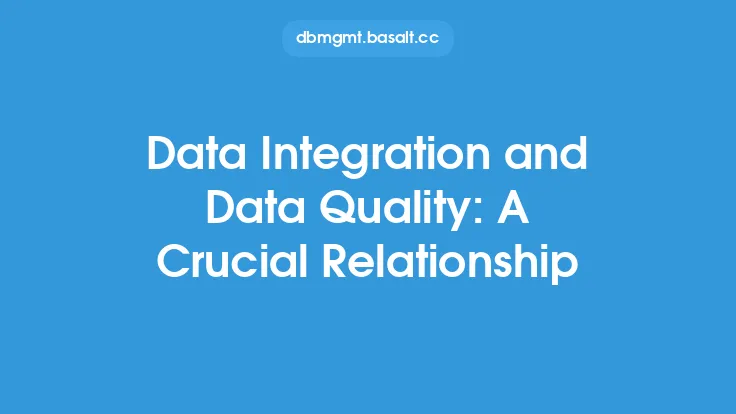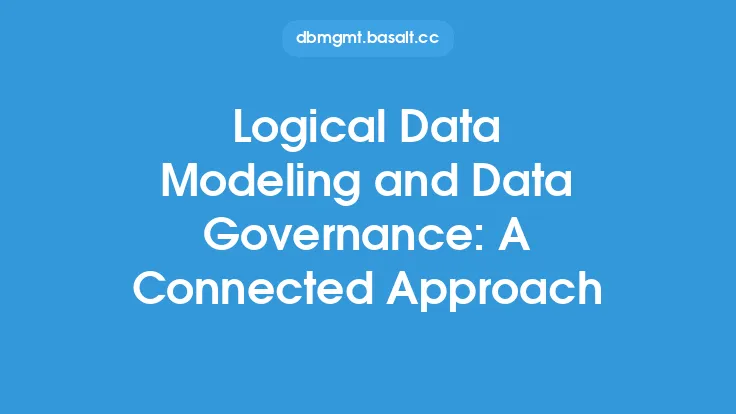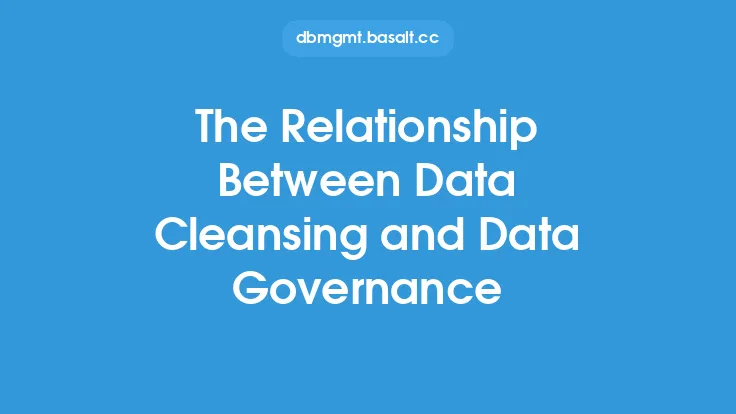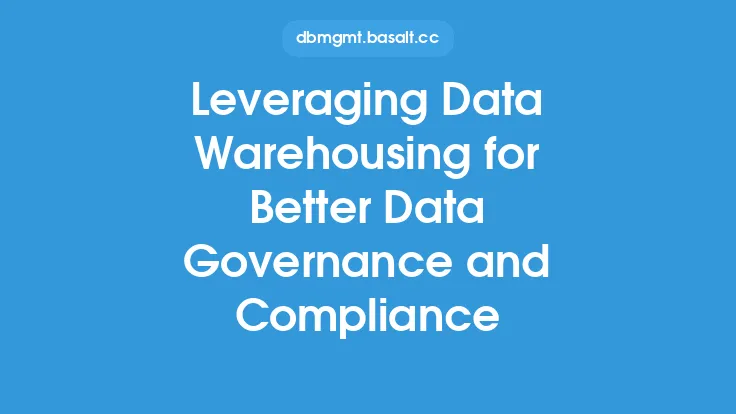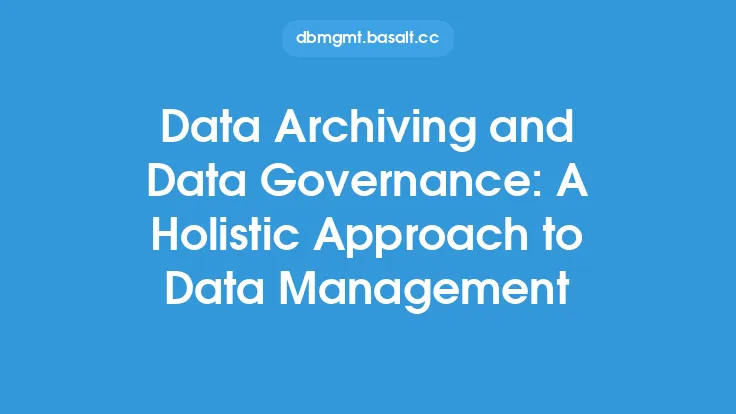Data transformation is a crucial process in the data lifecycle, enabling organizations to convert raw data into a usable format for analysis, reporting, and decision-making. However, data transformation is not a standalone process; it is closely tied to data governance, which ensures that data is accurate, complete, and secure throughout its lifecycle. In this article, we will explore the symbiotic relationship between data transformation and data governance, highlighting the importance of integrating these two processes to ensure data quality, integrity, and compliance.
Introduction to Data Governance
Data governance refers to the set of policies, procedures, and standards that organizations use to manage their data assets. It encompasses data quality, data security, data privacy, and data compliance, ensuring that data is handled correctly and consistently across the organization. Effective data governance provides a framework for data management, enabling organizations to make informed decisions, reduce risks, and improve data-driven insights. Data governance is not a one-time task; it is an ongoing process that requires continuous monitoring, evaluation, and improvement.
The Role of Data Transformation in Data Governance
Data transformation plays a critical role in data governance, as it enables organizations to convert raw data into a standardized format that is consistent with their data governance policies. Data transformation involves a series of processes, including data cleansing, data mapping, data aggregation, and data formatting, which ensure that data is accurate, complete, and consistent. By applying data transformation rules and standards, organizations can ensure that their data is compliant with regulatory requirements, industry standards, and internal policies. Moreover, data transformation helps to identify and correct data errors, inconsistencies, and inaccuracies, which is essential for maintaining data quality and integrity.
Data Governance Framework for Data Transformation
A data governance framework for data transformation should include several key components, including data standards, data policies, data procedures, and data monitoring. Data standards define the rules and guidelines for data transformation, ensuring that data is consistent and accurate. Data policies outline the responsibilities and accountabilities for data transformation, while data procedures provide step-by-step instructions for data transformation processes. Data monitoring involves tracking and evaluating data transformation processes to ensure that they are operating correctly and efficiently. By establishing a data governance framework for data transformation, organizations can ensure that their data is handled correctly and consistently, reducing the risk of data errors, inconsistencies, and non-compliance.
Technical Aspects of Data Transformation and Data Governance
From a technical perspective, data transformation and data governance involve several key technologies and tools, including data integration platforms, data quality tools, and data governance software. Data integration platforms, such as ETL (Extract, Transform, Load) tools, enable organizations to extract data from multiple sources, transform it into a standardized format, and load it into a target system. Data quality tools, such as data profiling and data validation tools, help to identify and correct data errors, inconsistencies, and inaccuracies. Data governance software, such as data cataloging and data lineage tools, provide a centralized repository for data metadata, enabling organizations to track data provenance, data quality, and data compliance.
Benefits of Integrating Data Transformation and Data Governance
Integrating data transformation and data governance provides several benefits, including improved data quality, increased data integrity, and enhanced data compliance. By applying data governance policies and standards to data transformation processes, organizations can ensure that their data is accurate, complete, and consistent. This, in turn, enables organizations to make informed decisions, reduce risks, and improve data-driven insights. Moreover, integrating data transformation and data governance helps to reduce data errors, inconsistencies, and non-compliance, which can result in significant cost savings and improved operational efficiency.
Best Practices for Data Transformation and Data Governance
To ensure the success of data transformation and data governance initiatives, organizations should follow several best practices, including establishing clear data governance policies and standards, defining data transformation rules and procedures, and monitoring data transformation processes. Organizations should also establish a data governance framework that includes data standards, data policies, data procedures, and data monitoring. Additionally, organizations should invest in data quality tools, data integration platforms, and data governance software to support data transformation and data governance processes. By following these best practices, organizations can ensure that their data is handled correctly and consistently, reducing the risk of data errors, inconsistencies, and non-compliance.
Conclusion
In conclusion, data transformation and data governance are closely tied processes that are essential for ensuring data quality, integrity, and compliance. By integrating data transformation and data governance, organizations can ensure that their data is accurate, complete, and consistent, enabling them to make informed decisions, reduce risks, and improve data-driven insights. By establishing a data governance framework, investing in data quality tools and data integration platforms, and following best practices, organizations can ensure the success of their data transformation and data governance initiatives. As data continues to play an increasingly important role in business decision-making, the importance of data transformation and data governance will only continue to grow, making it essential for organizations to prioritize these processes and invest in the necessary technologies and tools to support them.

